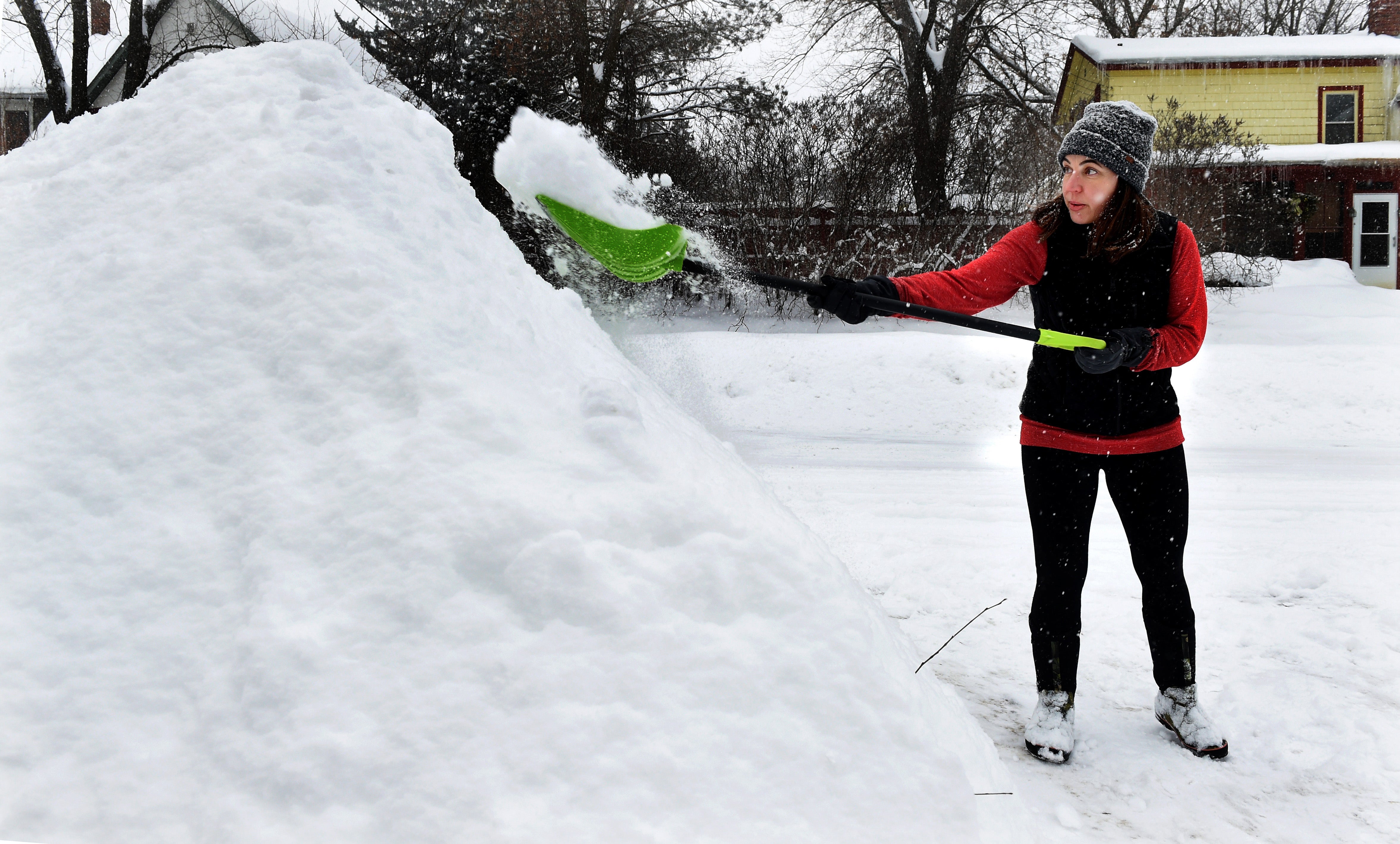How to avoid heart attacks, concussions, dehydration in winter
Winter is a particularly dangerous time of year and can severely impact our physical health
INDIANAPOLIS (WISH) — When we think of snow, snow angels, sledding, ice castles and more come to mind.
But while snowflakes can be fun, they can also be deadly and result in heart attacks, concussions and dehydration. Here’s what you need to know to protect yourself.
Shoveling can lead to heart attacks
An estimated 100 people die per year in the U.S. as a result of tackling heavily powdered driveways and it’s important to understand why. The underlying mechanism behind the association between snowfall and cardiac arrest is called the “Valsalva maneuver.” It occurs when an individual moves heavy objects while simultaneously holding his or her breath.
This is a natural response and is even helpful at times. But sudden exertion, like pushing pounds of snow, puts a big strain on the heart. Because the person isn’t breathing, lung pressure increases. Air isn’t expelled as it normally does. This is can result in cardiac arrest, especially if a person isn’t physically active to begin with.
How can I prevent a heart attack while shoveling?
Make sure to breathe and rest in between heaves. The same goes for when pushing a snowblower.
Don’t allow the snow to pile up too much, rather do a little bit at a time. Aim to shovel before the snow accumulates. It’s recommended to head out before it reaches two inches.
Age is a risk factor for heart attacks no matter how fit a person is. Men aged 45 and older should be cautious. For women, it’s 55 and older.
Black ice heightens the risk of head injuries
There are a lot of injuries that can happen during heavy snowfall. Throwing black ice into the wintry mix puts a person at a greater risk of slips and falls. Black ice is dangerously slick and tricky to navigate because it takes on the color beneath its surface. Slips and falls can result in sprained ankles, bruised elbows and fractured hips to name a few. But the most dangerous injury is a blow to the head.
Concussions range from mild to severe depending on the impact. Sometimes a person loses consciousness, but not always, so it’s important watch for symptom both immediate and long-term.
According to the Mayo Clinic short-term symptoms of a concussion include feeling pressure in the head, fatigue and nausea as well as ringing in the ears and vomiting. Long-term symptoms manifest over days or even weeks and include difficulty concentrating, memory loss, a heighten sensitivity to light and noise as well as depression and difficulty sleeping.
How can I reduce my risk of falling?
Stay in the sun. Shaded sidewalks are more prone to black ice.
Be mindful when walking on bridges or overpasses. Cold air circulates both above and below these elevated structures so ice forms more quickly.
Wear proper shoes such as ones with rubber treads. These soles better grip to icy surfaces. Non-slip shoe grippers also improve foot traction.
Dehydration is more common in winter
In temperatures below freezing, that misty cloud of air exhaled is actually our body’s form of winter sweat. When people see their breath, it’s a sign that water is leaving the body. Interestingly, water is lost more quickly in cold weather than it is in warm weather. Instead of evaporating through the skin, it’s pulled from the lungs with each exhale.
Winter weather also reduces the thirst response and when it’s cold out we just don’t feel like drinking water. Dehydration is associated with dry skin, dizziness and a feeling of overall fatigue. One might also present symptoms such as a dry, sticky mouth and darker than normal urine.
How can I prevent dehydration in the winter months?
Prevention is key. Drink water before feeling thirsty. A thirst response means a individual is already dehydrated.
Layer up when headed out. This helps the body expel sweat through the skin instead of water vapor from the lungs.
Consider a humidifier to retain air moisture. Inhaling dry air makes a person more susceptible to dehydration.



